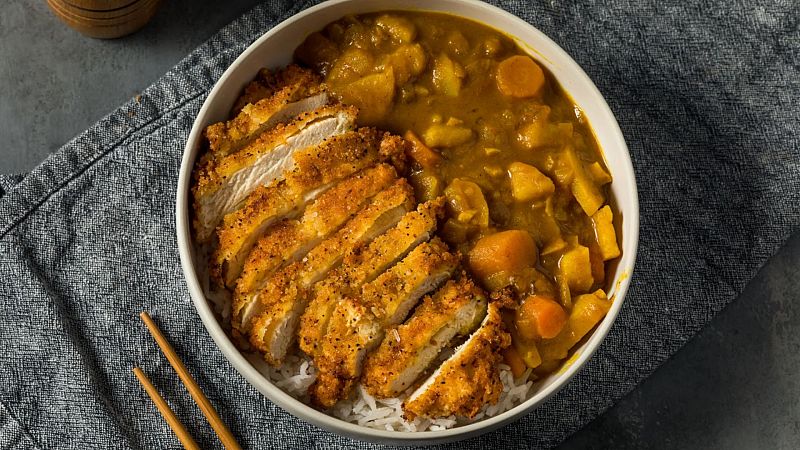The Evolution of Yōshoku: A Taste of Global Fusion in Japanese Cuisine
At the bustling Expo 2025 in Osaka, a small but eager line begins to form around the Tasty Japan food stall. The excitement is palpable as whispers circulate that Sumidaya Shoten, a renowned rice expert, is about to serve samples of its famous ‘curry rice.’ As the trolley emerges from behind the scenes, loaded with spoonfuls of rich, thick sauce and sticky white rice, the anticipation is met with delight. The first taste is just as vibrant and tangy as promised, offering a glimpse into the heart of Japanese cuisine.
Curry rice, a beloved national dish, has an unexpected origin story rooted in Indian culinary traditions brought to Japan by English sailors. This fusion of flavors exemplifies Yōshoku, a unique style of Japanese cuisine that blends local tastes with global influences. As the world becomes more interconnected, the Japanese government is making efforts to introduce these Yōshoku dishes to a broader audience, using events like Expo 2025 to share their history and cultural significance.
Food researcher Yuriko Aoki highlights how traditional Japanese cuisine, centered on vegetables, fish, and rice, was once considered ‘too healthy’ before incorporating Western elements. For centuries, meat was forbidden in Japan, leading to a diet lacking in essential nutrients. This changed when Japanese people noticed they were often shorter than foreign visitors, prompting a shift towards consuming more pork and beef in the early 20th century.
One of the most iconic examples of Yōshoku is Tonkatsu, a deep-fried pork cutlet served with shredded cabbage, Worcestershire sauce, and Japanese rice. Its name itself reflects its origins, with ‘ton’ meaning pork and ‘katsu’ derived from the French ‘côtelette.’ Over time, regional variations have emerged, such as Miso Katsu, which uses miso sauce instead of the traditional Worcestershire. According to a recent survey, 42% of foreign visitors to Japan have tried Tonkatsu, showcasing its widespread appeal.
The influence of Japanese cuisine extends beyond its borders, with over 180,000 Japanese restaurants worldwide—tripling in number over the past decade. High-quality ingredients, sustainability, and low-fat recipes are now central to many global kitchens, resonating with both chefs and diners. At Expo 2025, a panel of Michelin-starred chefs shared innovative ways to integrate Japanese food concepts into local dishes.
Kyle Connaughton, chef at SingleThread Farm in California, drew inspiration from the traditional Japanese takiawase vegetable soup to create a Californian salad-style version using locally grown peppers. Meanwhile, Mauro Calogreco, chef at Mirazur in France, developed a recipe featuring duck with red seaweed and red shiso, an aromatic herb with a flavor profile between mint and basil. Thai chef Chaudaree ‘Tam’ Debhakam from Baan Tepa in Bangkok paired rare Noto beef with a ‘blackened’ Thai curry, complemented by tropical fruits and jasmine rice cooked in bamboo leaves.
Sustainability remains a key focus for chefs at Expo 2025. Yoshihiro Murata from Kyoto’s Kikunoi restaurant emphasized the importance of balancing animal proteins with plant-based dishes, advocating for meals where vegetables make up more than half the course. This philosophy aligns with the core values of Japanese cuisine, which emphasizes the purity of ingredients—herbs, vegetables, seafood, fish, and meat—allowing them to shine on the plate.
Japanese rice, a humble yet essential staple, plays a vital role in every meal. Yuriko Aoki, who considers this crop her favorite Japanese specialty, notes that new rice can be enjoyed with just a dash of salt, highlighting its natural deliciousness. As Japan continues to share its culinary heritage with the world, the essence of Yōshoku remains a testament to the power of cultural exchange and innovation.







